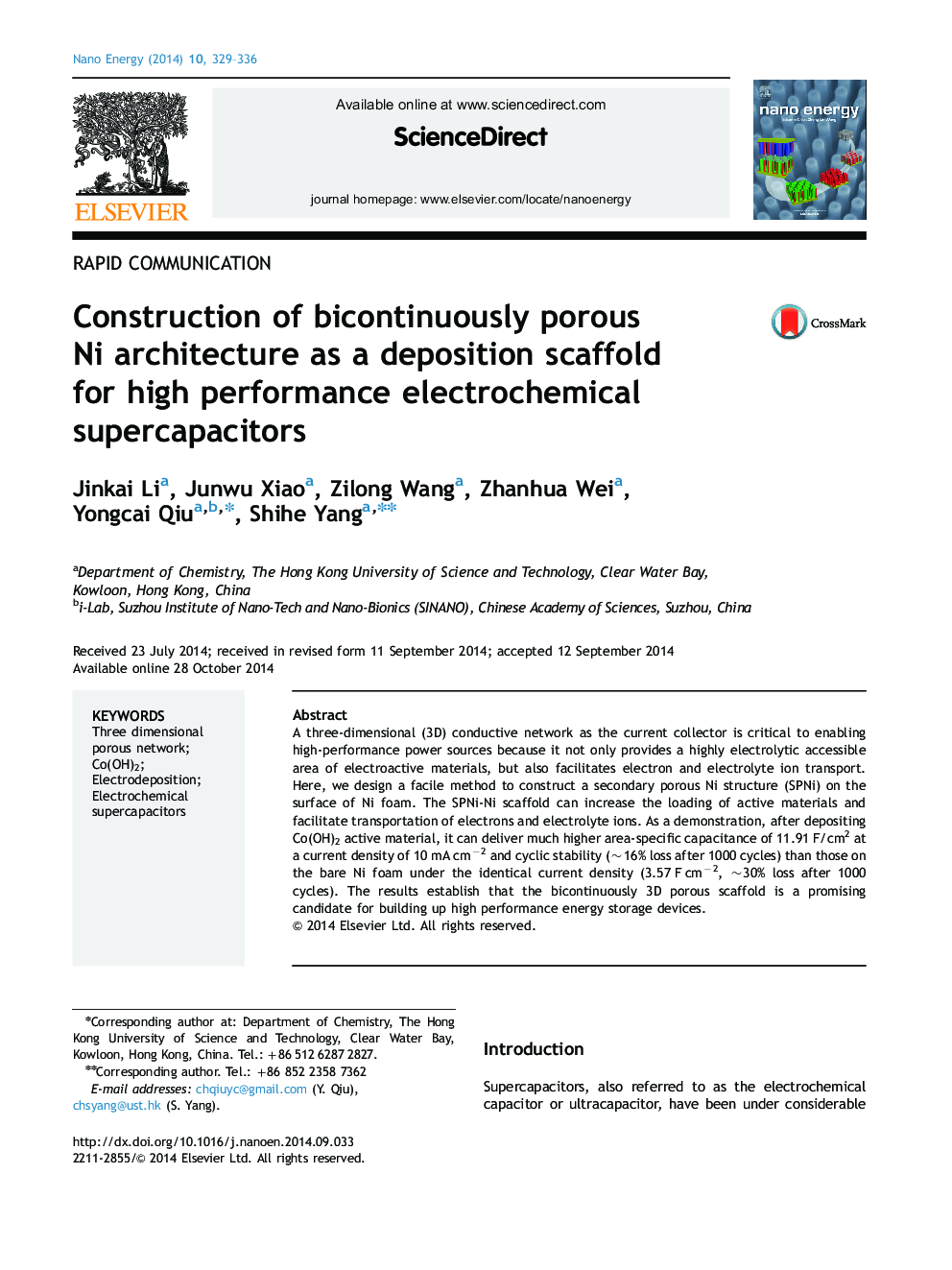| Article ID | Journal | Published Year | Pages | File Type |
|---|---|---|---|---|
| 1557512 | Nano Energy | 2014 | 8 Pages |
•A facile method is used to prepare a secondary porous Ni structure.•The secondary porous Ni structure can be served as the deposition scaffold for constructing high performance energy storage devices.•The bicontinuously 3D porous scaffold not only provides a highly electrolytic accessible area of electroactive materials, but also facilitates electron and electrolyte ion transport.•A good electrochemical capacitor performance is achieved on the bicontinuously 3D porous scaffold.
A three-dimensional (3D) conductive network as the current collector is critical to enabling high-performance power sources because it not only provides a highly electrolytic accessible area of electroactive materials, but also facilitates electron and electrolyte ion transport. Here, we design a facile method to construct a secondary porous Ni structure (SPNi) on the surface of Ni foam. The SPNi-Ni scaffold can increase the loading of active materials and facilitate transportation of electrons and electrolyte ions. As a demonstration, after depositing Co(OH)2 active material, it can deliver much higher area-specific capacitance of 11.91 F/cm2 at a current density of 10 mA cm−2 and cyclic stability (~16% loss after 1000 cycles) than those on the bare Ni foam under the identical current density (3.57 F cm−2, ~30% loss after 1000 cycles). The results establish that the bicontinuously 3D porous scaffold is a promising candidate for building up high performance energy storage devices.
Graphical abstractFigure optionsDownload full-size imageDownload as PowerPoint slide
